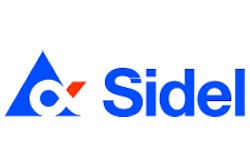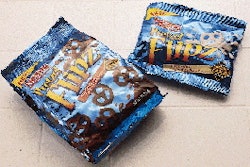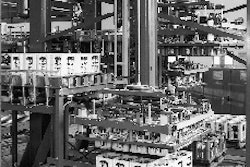"Our expectation is that this will be the premier PET plant in the world," says Alex Hernandez, a process engineer at the Chino, CA, plant of Ball Corp. This is the first of Ball's facilities to supply bottles of polyethylene terephthalate, which opened in late 1995. In less than two years, the plant commissioned 10 automated preform injection molders from Husky (Bolton, Ontario, Canada) and seven high-output blow molders from Sidel (Norcross, GA). While those systems enable the plant to produce about 700 million PET bottles in a variety of sizes each year, what helps make Chino a showcase plant for Ball are the bottle inspection systems located in each of the 500-bpm blow molding machines, Hernandez says. What Ball calls state-of-the-art inspection machines are on-line video-based systems from Pressco/IIS (Cleveland, OH). "We have a Quality Systems department, but they don't inspect each bottle," Hernandez points out. "Instead, we rely on the Pressco integrated inspection system to do that for us. If the system is not on-line, it causes a lot of problems for us. At Ball, we say that we have to build quality in, we can't 'inspect' it in. At the speeds we run, manual inspection would be impossible." IIS has provided automated image-based inspectors for the plastics industry for about 10 years. In May '96, the company was acquired by Pressco Technology, a maker of on-line sensing equipment for the metal can industry. The IIS technology has recently been consolidated into Pressco's ISO 9001-registered facility. Inspect and correct Each PET bottle that Ball makes at Chino passes through a four-point inspection process via the machine vision system. It checks the bottle's base, neck, seal and finish integrity, matching the image of each bottle to a programmed set of parameters. Integrated into the blow molding machines to eliminate additional bottle handling equipment, the vision systems can easily keep pace with the molders' output of 500 bpm. Ball is confident that these systems give them a distinct quality edge, compared to competitors who might check bottle quality only via random inspections by quality personnel. Rejecting a container that could potentially bring to a halt a high-speed filling line, or disappoint a retailer or consumer by becoming a leaker helps eliminate a major source of customer complaints. Even if only two of every 1ꯠ bottles produced are swept into the reject chute, the inspection system is a cost-effective investment, Hernandez states. Even more important, a feedback control system continuously diagnoses each blow molding machine for potential problems. Along with identifying defects compared to the bottle specification, the system correlates the problem to the specific component of the molder that may need attention. Whether the molding cavity, a spindle or a transfer arm may have contributed to a defect, the system alerts operators so they can make adjustments before a machine malfunctions. By pinpointing potential trouble spots, operators can avoid costly downtime at each blow molder. This defect correlation also helps to train workers to understand and control the blow-molding process. This is especially helpful for Chino's less-experienced personnel. "When we're in control customer complaints decrease. It's the operators' jobs to make sure that the bottle quality is up to specification coming out of the Sidel machines. Anything less than that means we have to take action," Hernandez notes. How it works At Chino, the Husky injection molders run round-the-clock to provide a steady supply of preforms for the blow molders. Currently the plant makes a wide variety of bottles, from 16 oz to 2 L. It also molds a 1.75-L bottle for vodka. Transferred into the Sidel machines, the preforms are heated and conditioned before being loaded into the molds and blown into bottles. Mechanical fingers remove the bottles from the molds and deposit them onto a conveyor that runs through tunnels between Sidel's two internal transfer arms. The tunnels are where the machine vision cameras are located. Individual strobe lights flash as solid-state charge-coupled device (CCD) cameras collect images of the inspection points. The Pressco/ IIS computer analyzes the images compared to the bottle specification to detect flaws specific to each inspection area. Some of the defects that are identified include underblown bottles, folds, off-centered gates, base holes or, most importantly, seal surface defects. The computer accepts or rejects each bottle, with defective containers swept down a chute by the same mechanical arm that rejects underblown bottles. The bottles then pass onto the exit starwheel for the final check. Here another CCD camera permits the system to image the dimensions at numerous points on the thread area. Advanced real-time software algorithms then determine the thread dimensions to a high level of accuracy. Each finish inspection is customized to the type of specific finish geometry that Ball's customer requires. Images of inspected containers flash across a screen on the Pressco/IIS console that's mounted above the Sidel cabinet. Operators can freeze the image on the screen for a closer look, or they can choose to display a different inspection point by entering commands on the system's membrane keypad or via a standard keyboard. Since Ball's container specifications are programmed into the computer, operators can easily call up the inspection parameters for another container when the line is being changed from one bottle size or color to another. Quality for growth Even as a newcomer to PET bottlemaking, Ball brings to it the same focus on economies and improvements that were the hallmark of its glass business. "The company is pioneering in PET, just as it did in glass manufacturing," Hernandez points out. Since April '95, Ball has invested nearly $200 million to set up the Chino and three other PET bottle plants, as well to hire and train about 350 workers for more than 750ꯠ sq' of production space. When Ball purchased the assets of the Honickman Group of Philadelphia, it announced that it would close its Reading, PA, plant, and transfer its business to a new plant in Delran, NJ. Despite the closing, the company continues to increase its production capacity. That's all due to continuing double-digit growth from producers of juice, water, liquor and food companies, as well as in soft drinks. "The market for PET containers is growing so fast because of the availability of any shape you can think of. The sky's the limit!" Hernandez says. Like company management, he recognizes that the company that can produce cheaper and better bottles will have all the business it can handle. "We feel that our technology allows us to be a low-cost, high-quality supplier," says Larry Green, president of Ball's Atlanta-based Plastic Container Operations. "More than half of our business has come from customers that are converting their packaging from either glass or older PET technology. Some are former self-manufacturers who are now choosing to buy from us rather than continue to make bottles in-house."



























